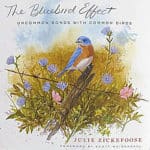
4
JanOne, Two, or Three Love Affairs to Remember
 It’s not the holidays for me without a Love Affair. The movie, that is. It might be the original 1939 black-and-white film. Love Affair. Or it could be the 1957 color remake, An Affair to Remember. Or perhaps it’s the1994 Love Affair, Warren Beatty-style. It’s that ending scene on Christmas Day in Terry McKay’s apartment that makes my holiday season a classic affair of the heart.
It’s not the holidays for me without a Love Affair. The movie, that is. It might be the original 1939 black-and-white film. Love Affair. Or it could be the 1957 color remake, An Affair to Remember. Or perhaps it’s the1994 Love Affair, Warren Beatty-style. It’s that ending scene on Christmas Day in Terry McKay’s apartment that makes my holiday season a classic affair of the heart.
The original Love Affair released in 1939 was Director Leo McCarey’s first attempt at telling the story of a notorious playboy who falls deeply and surprisingly in love with a beautiful fellow cruise mate. McCarey co-wrote this tale of a love affair between French painter and paramour, Michel Marnet and the beautiful Terry McKay. (This screenplay was written by Delmer Daves and Donald Ogden Stewart.)
McCarey had recently crossed the Atlantic himself, along with his wife on a cruise ship. That voyage was inspiration for the film when he viewed the Statue of Liberty and skyline upon entering the New York harbor. The film was shot in glorious CinemaScope, its lovely photography of the luxurious ocean liner and wide-open ocean, impressing theatergoers. Michel Marnet is played by popular French actor Charles Boyer. Boyer is aloof, and a bit too serious, for my taste. Yet, his Michel Marnet character manages to woo glamorous and feisty Terry McKay, played by Academy Award nominee Irene Dunne. Unlike the actresses who played McKay in other versions of the film, Irene Dunne was also a singer. The song sung by children from the orphanage in the 1939 film (“Wishing”) was nominated for Best Original Song in 1940. Of course, “Over the Rainbow” from the Wizard of Oz was also nominated and it won the award that year.
In 1957, Director McCarey, realizing the enormous success of one of the greatest romances of all time, decided to remake Love Affair. He had directed a big failure in 1952 (My Son John) and needed a sure win. And so, in An Affair to Remember, McCarey cast heart throb, British-American Cary Grant in the new version. Grant played opposite red-headed Deborah Kerr as Nick Ferrante.
Cary Grant was a charismatic and handsome playboy and he was the perfect man for his role in Affair to Remember. Grant was in the midst of his third marriage at the time of the film (eleven years from 1949 to 1962 to Betsy Drake) and that marriage actually lasted the longest of any of them.
Even today over 60 years later, An Affair to Remember is absolutely most film-lovers favorite version of the two versions of the film. Several obvious reasons are that Grant is more likeable and sensitive than Charles Boyer in the role of the uncatchable bachelor. Instead of a distant and suave Frenchman in the 1939 film, Cary’s character is both European and American and just a bit more vulnerable. Deborah Kerr as Terry McKay is still feisty and feminine, but the film is in glorious color, and highlights Kerr’s subtle creamsicle gown or bright 50s orange jacket.
McCarey included the same dialog in virtually every scene and it seems a direct replay from the original with Cary’s British accent substituting for Boyer’s French.
What really contributed to the 1957 film’s success, however, was its Academy Award-nominated theme song, “An Affair to Remember” or “Our Love Affair”. Not only is it sung by Vic Damone at the beginning of the film, but is also sung later in the film by Terry McKay, Deborah Kerr’s leading character. Interestingly, Deborah Kerr did not sing in the film but her voice was actually dubbed by Marnie Nixon. Nixon was also the lead character’s singing voice in the film versions of The King and I (Deborah Kerr), West Side Story (Natalie Wood), and My Fair Lady (Audrey Hepburn).
“Our Love Affair” became a jazz standard after its popularity in the film.
The critics don’t agree with me, but my favorite version of the film is the 1994 version, Love Affair, produced by Warren Beatty. The box office didn’t agree either; the 1994 Love Affair cost over $60,000,000 to make and only grossed $18,000,000 in theaters.
However, I think Beatty was perfectly cast. For over three decades of his life, and into his mid-50s, he was known as an insufferable romancer. He was so self-absorbed, in fact, that Carly Simon admitted in her autobiography (Boys in the Trees, 2015) that her cranky song “You’re So Vain” was written about three womanizing men, one of them Warren Beatty.
Yet, in 1992, Beatty had finally settled down at the age of 55 with actress Annette Benning. She was cast as Terry McKay in his version of Love Affair, just as she seemingly had been in real life. Beatty and Benning have now been married 24 years (with three children.) In the film, when Beatty is perfectly believable when he says “You know, I’ve never been faithful to anyone in my whole life.”
The last version of Love Affair begins on a flight from New York to Sydney Australia. When the plane goes down somewhere over the Pacific islands, Beatty and Benning, playing Mike Gambril and Terry McKay, are forced to board a Russian cruise ship in order to re-board a flight in Tahiti. The supporting actors who join them and wacky Russian crew make the film funny and bright for me. It is also Katherine Hepburn’s last film role film role at the age of 86 and she is wonderfully crabby. Kate Capshaw and Pierce Brosnan, play the love interests at home and the late Garry Shandling is particularly charming as Beatty’s agent.
It’s interesting to note that the screenwriters have named the lead actress Terry McKay in all three versions, whether played by Dunne, Kerr, or Benning; yet, her love affair is with Michel Marnet in 1939, Nick Ferrante in 1957, and Mike Gambril in 1994.
Whichever version of this film you love, the story has been enchanting us for nearly four decades and are worthy of a watch anytime during the year.
Charlotte Canelli is the library director of the Morrill Memorial Library in Norwood, Massachusetts. Read Charlotte’s column in the December 29, 2016 issue of the Norwood Transcript and Bulletin.








